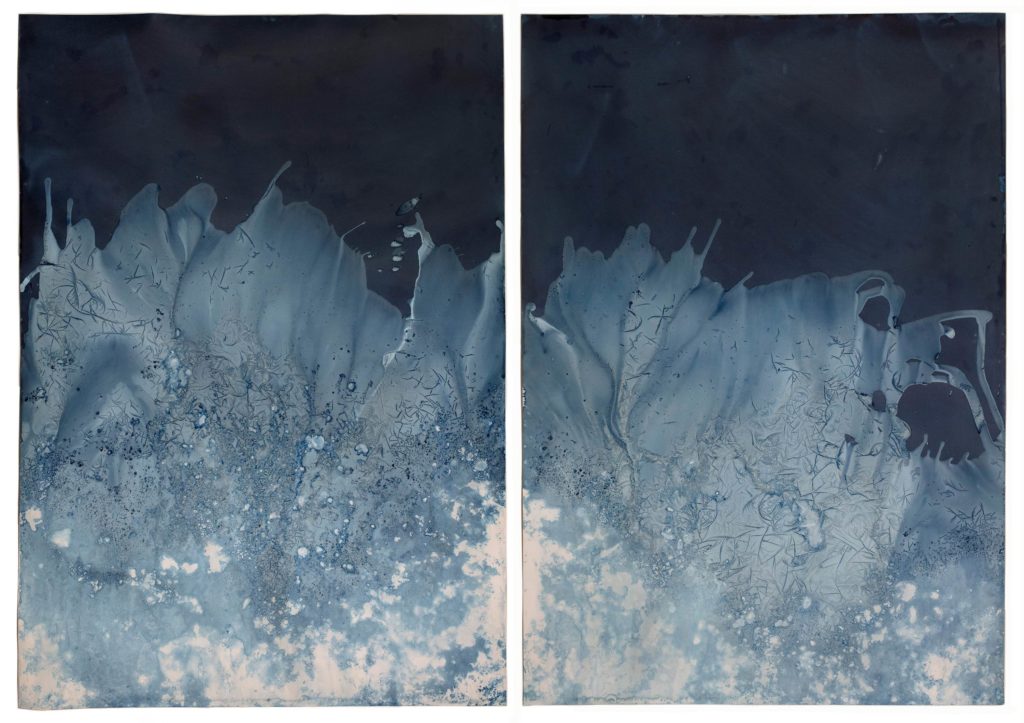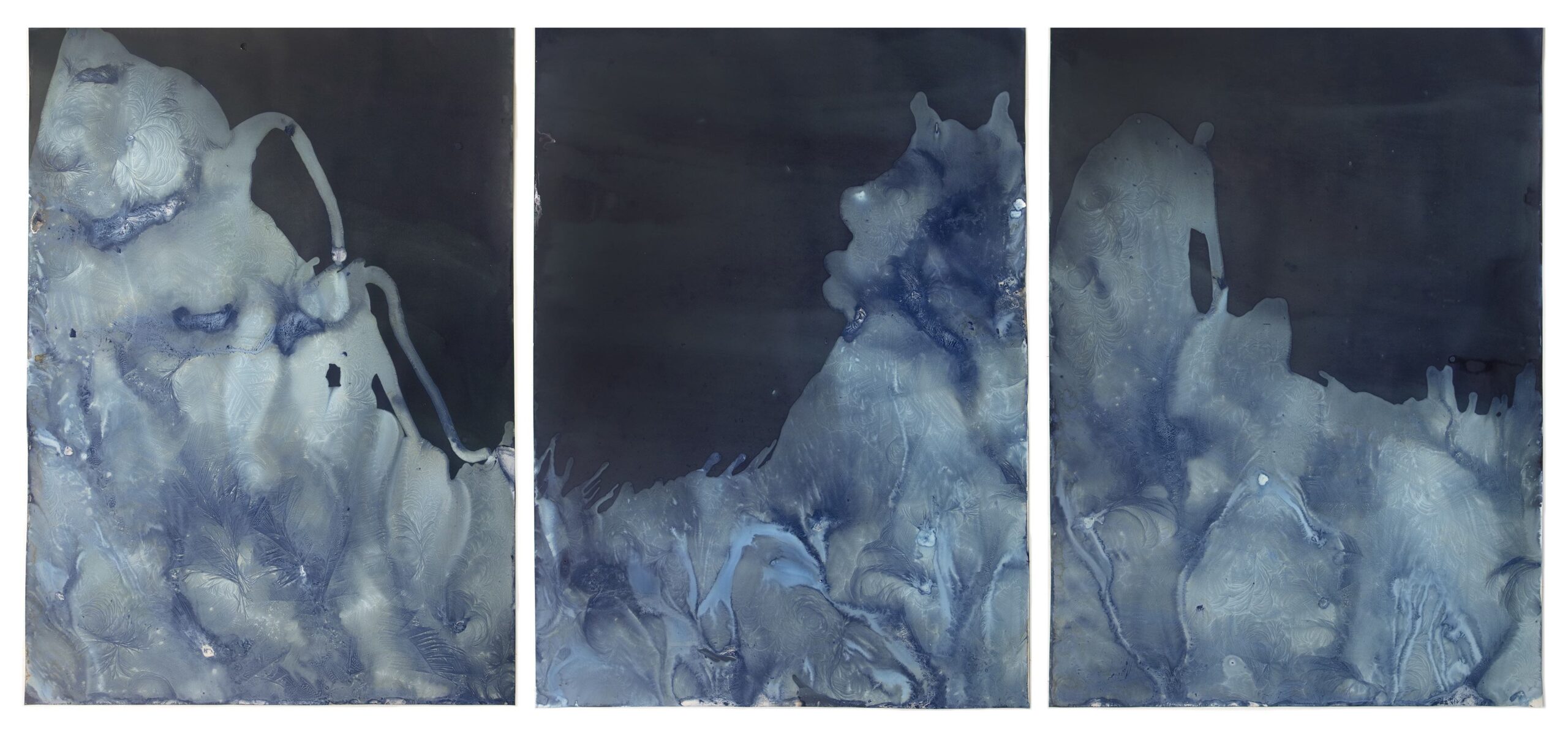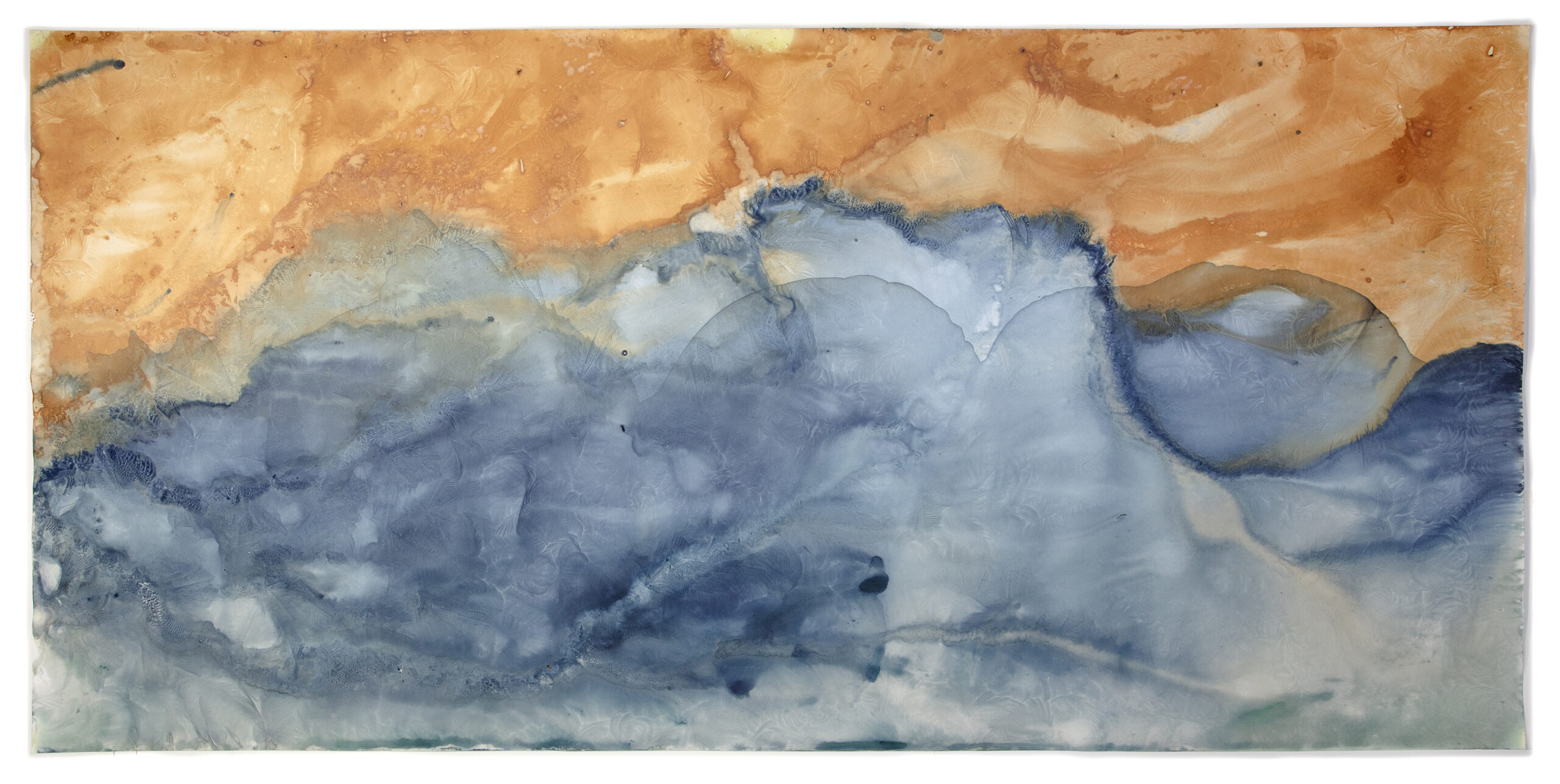
When Meghann Riepenhoff was an undergraduate art student at the University of Georgia, she struggled to overcome a creative block in her darkroom photography class. Then, a classmate suggested that she try creating a photographic image of something she had never seen before. “That really stuck with me,” Riepenhoff says. “Like, does that exist? Can I do that? What does that mean to make pictures I haven’t seen before? That question was bobbing around in my head like a challenge: to find a vision that was uniquely mine.” For the past decade, Riephenhoff—who has worked in sculpture and drawing in addition to photography—has evolved her practice to mainly focus on cyanotypes, a type of chemical photographic printing process that yields work characterized by blue hues.
Riepenhoff’s most recent solo exhibition, Ice, at Yossi Milo Gallery in New York, references nature—both its impermanence and the entropic forces at play there. “I think about this moment we’re in called the Anthropocene,” she says. “It used to be that water was the primary carver and shaper of the planetary surface, and we have actually shifted this balance. I’m looking at: How does water now move across this surface that is totally, dramatically changed by suburbs and highways and other interventions we have within the landscape?” In developing her cyanotypes, Riepenhoff uses elements such as sand or ice, resulting in a kind of multimedia print with an added ecological resonance. The images are at once familiar and slightly unfinished, suggesting a yet-to-be-discovered resolution. She says that she thinks about them as a microcosm invoking the macrocosm of the universe—the way ice crystals can resemble pictures we’ve seen of the Milky Way and Andromeda galaxies. “I hope the work elicits an immersive experience,” she says. “The processes of light and that magical moment of something showing up in the development tray really lured me into a long-lasting love of the field.”



